
Athens: 1 Day, 3 Ways
From ancient wonders to cutting-edge cuisine, the Greek capital is a feast for all the senses
Hailed as one of Europe’s most exciting cities right now, Athens offers a peerless blend of classical history, Mediterranean charm and a raw, edgy arts scene inspired by Greece’s recent economic woes. So rich is it in attractions that three or four full days are recommended pre- or post-cruise, but if you only have the one…
1. First Time?
A first visit to Athens should focus on the great classical sites dating back to the city’s Golden Age, when it pioneered democracy and led the Western world in science, art, architecture and seemingly every other aspect of human achievement.
King of the hills
Climb the Acropolis as early as you can. Neither the north nor the south slope is particularly steep, but the sun can be punishing in the middle of the day and the tourist crowds build up hour by hour. On this rocky outcrop above the city – once a citadel with walls so gigantic that they’re reputed to be the work of the mighty Cyclops – is a collection of Pentelic marble monuments that represent the height of artistic accomplishment in the ancient world.
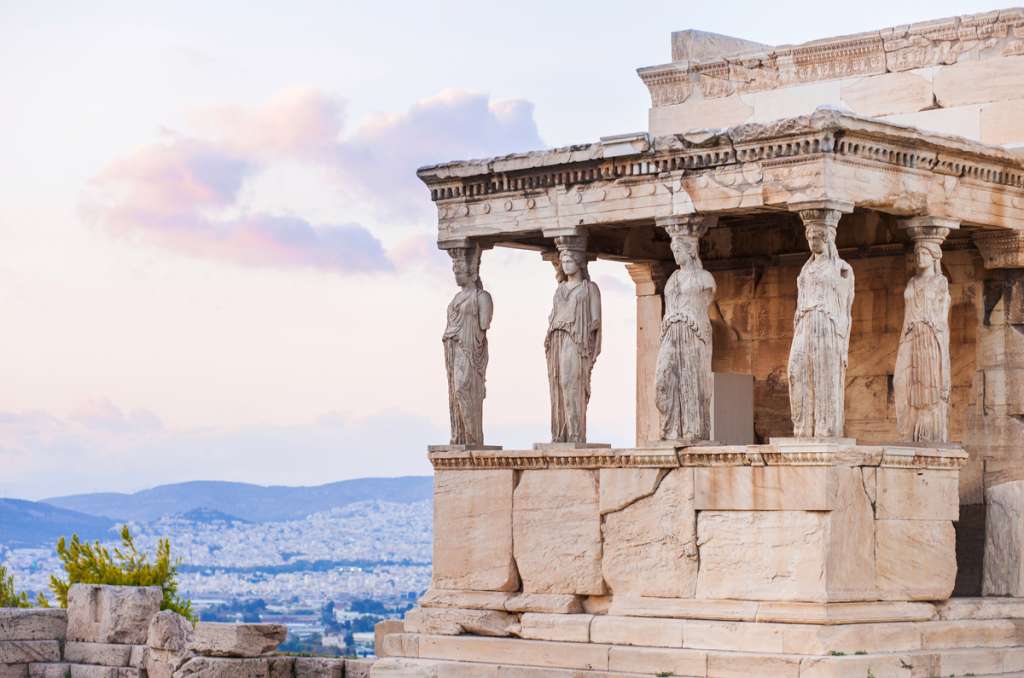
Dominant among these is the Parthenon. The very symbol of Athenian power and prestige, its uniquely harmonious appearance is the result of extraordinary architectural skill (slightly concave foundations and slightly convex columns make both appear completely straight).
Almost as impressive is the Erechtheion, a sanctuary set on the most sacred spot of the Acropolis, where Poseidon was said to have struck the ground with his trident. The structure is instantly recognisable for its “Porch of the Maidens”, with six elegant caryatids (female statues) as supporting columns. These are plaster casts but five of the originals, safe from the eroding elements, may be found in the Acropolis Museum.
Don’t miss the marvellous, pocket-sized Temple of Athena Nike, dedicated to the goddess of victory, which was the focus of public worship during the long Peloponnesian Wars against the Spartans.
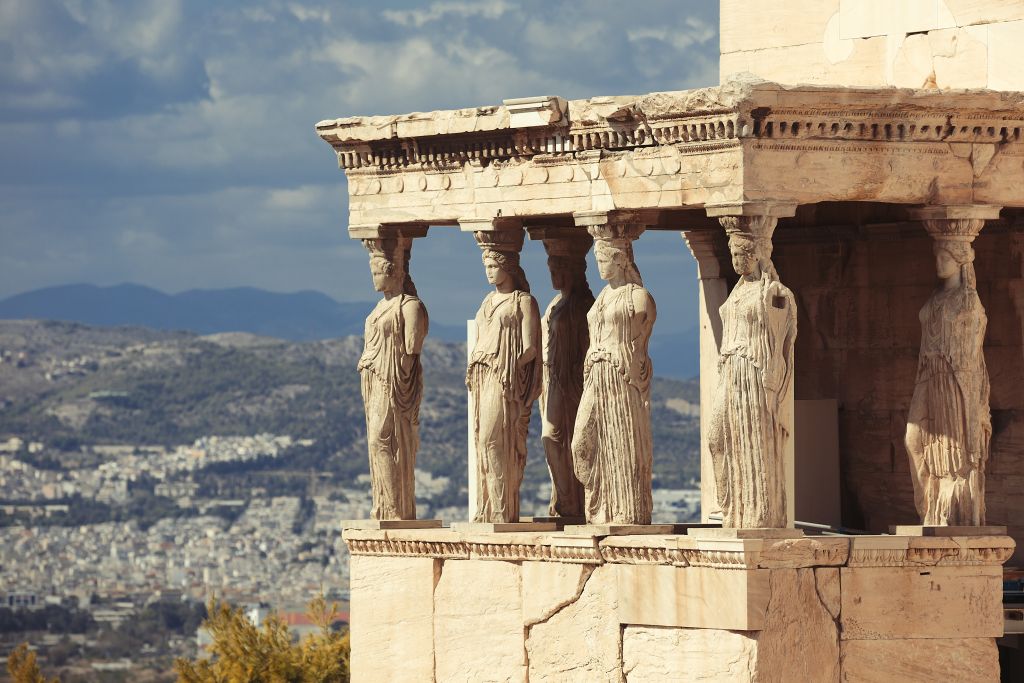
The outstanding Acropolis Museum is a wonderland of statues and sculptures. You’ll admire the Erechtheion caryatids, but the real drama is to be found on the top floor. In a stunning glass atrium overlooking the Acropolis itself, a Modernist Parthenon of metal columns has been forged to display the pediments and friezes that once adorned the original, along with numerous plaster casts in place of those appropriated by Lord Elgin in the 19th century and now in the British Museum.
Size mattered
Treat yourself to lunch at one of the alfresco restaurants clustered around Akropoli metro station, then take a short walk to the Temple of Olympian Zeus. This monumental edifice, 700 years in the making and the largest temple in mainland Greece, would have constituted one of the wonders of the ancient world. Only 15 of its 104 sky-scraping columns survive, but that’s more than enough to hint at the original building’s breathtaking scale.
Olympic Gold
Spare half an hour or so for the engaging Panathenaic Stadium, a 10-minute walk from the Temple of Olympian Zeus. Here, in an idyllic setting between two forested hills and the River Ilissos, on the outskirts of the ancient city, a great stadium was built in the 4th century BC to host athletic championships. Later, under Roman rule, sporting prowess gave way to bloodthirsty spectacle, and it is said that 1,000 wild animals were sacrificed at Hadrian’s inauguration in AD120.
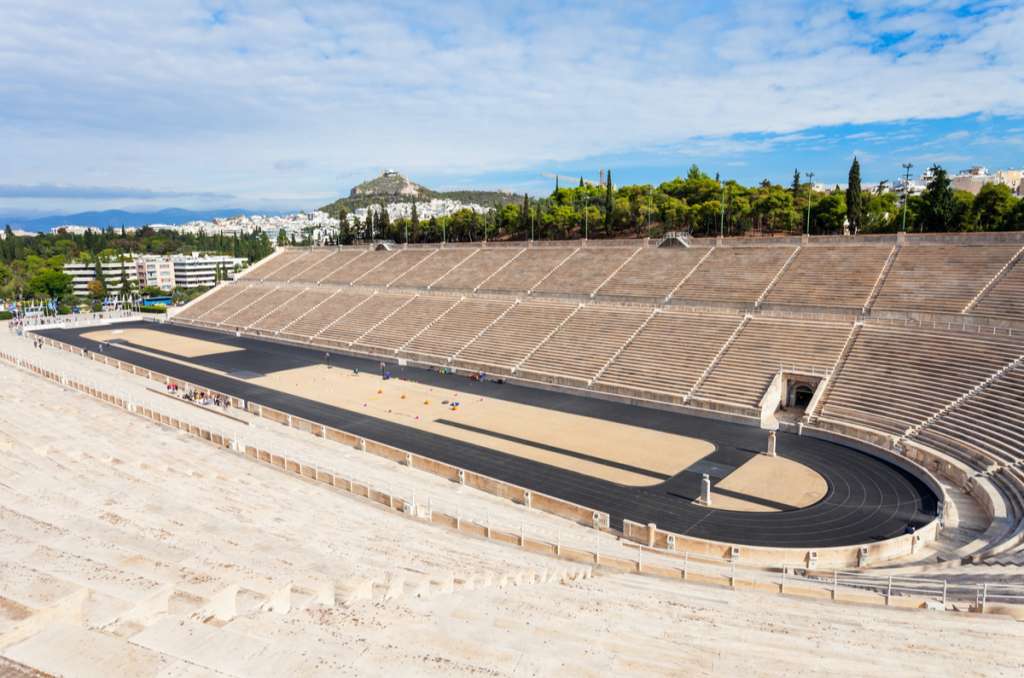
The stadium was reconstructed in its current gleaming marble for the first modern Olympics in 1896. It was also the archery venue and finish line of the Marathon in the 2004 Games, and every four years the Olympic flame begins its worldwide journey here. Visitors can simply sit in the stands, soaking up the history and fine views, though the more energetic can literally follow in the footsteps of Olympians past with a jog around the track.
Precious stones
In the bohemian northern neighbourhood of Exarhia is another of Athens’ historical highlights – the colossal National Archaeological Museum. Standout masterpieces include the glittering gold mask of Agamemnon, a collection of Cycladic figurines that inspired Picasso and Henry Moore, and two quite astonishing bronze statues – of Zeus (or possibly Poseidon), and a horse with its young rider.
The Basics
- Acropolis Museum, 15 Dionysiou Areopagitou Sreet, theacropolis museum.gr
- Panathenaic Stadium, Leof Vasileos Konstantinou, panathenaicstadium
- National Archaeological Museum, 44 Patission Street, namuseum.gr
2. Been There? Go Here!
Athens is a city without a centre: more a patchwork of neighbourhoods, each with its own character and attractions. Returning visitors familiar with the iconic classical sites may wish to explore one or two of these fascinating districts.
Syntagma and Koloniki
Syntagma Square, bounded on the east side by the Greek Parliament, has featured much in the news in recent years, as both the symbol of Greece’s economic strife and the focus of anti-austerity protests. Look out for modern art installations in the square itself and, on the hour, the changing of the parliamentary guard, resplendent in their traditional costume of white kilts and pom-pom shoes.
Past the parliament, along Leoforos Vasillissis Sofi as and into the neighbourhood of Koloniki, are three cultural gems well worth a visit.
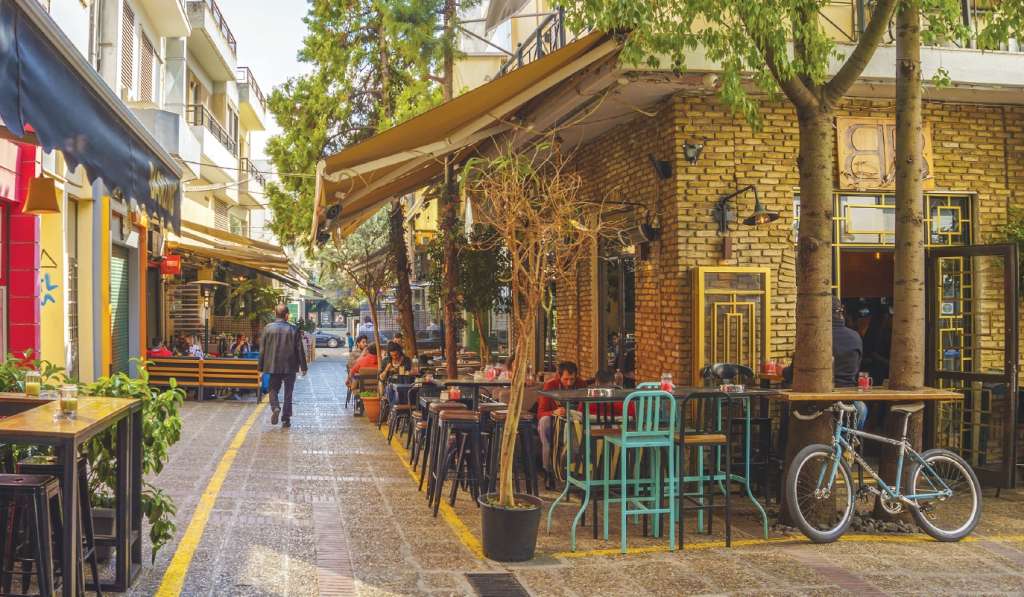
The Benaki Museum houses a private collection of extraordinary breadth, covering 50,000 years of human history in the region and including exhibits as diverse as Mycenaean gold jewellery and Coptic tapestries, Byzantine mosaics and El Greco icons, along with entire rooms lifted from Macedonian mansions, a magnificent array of Greek national costumes and, currently, a delightful mini-exhibition of Art Nouveau.
Aristotle’s Lyceum was discovered by accident in the 1990s. Admittedly, it takes a supreme effort of the imagination to equate these foundation-level ruins with how the building must have looked in its heyday, but this is one of the world’s most significant archaeological sites. Here, as well as conducting his school of philosophy, the great thinker Aristotle compiled works on logic, morality, psychology, cosmology, mechanics, biology, anatomy, botany and astronomy, which have profoundly influenced the development of Western civilisation ever since.
Set in the grounds of the delightful 19th century Villa Ilissos, the vast Byzantine and Christian Museum houses a priceless collection of artworks and artefacts telling the story of the rise of Christianity and the Byzantine Empire. Highlights include exquisitely illuminated manuscripts and a mesmerising 17th century icon of Elijah’s ascension to Heaven in a fiery chariot.
Monastiraki
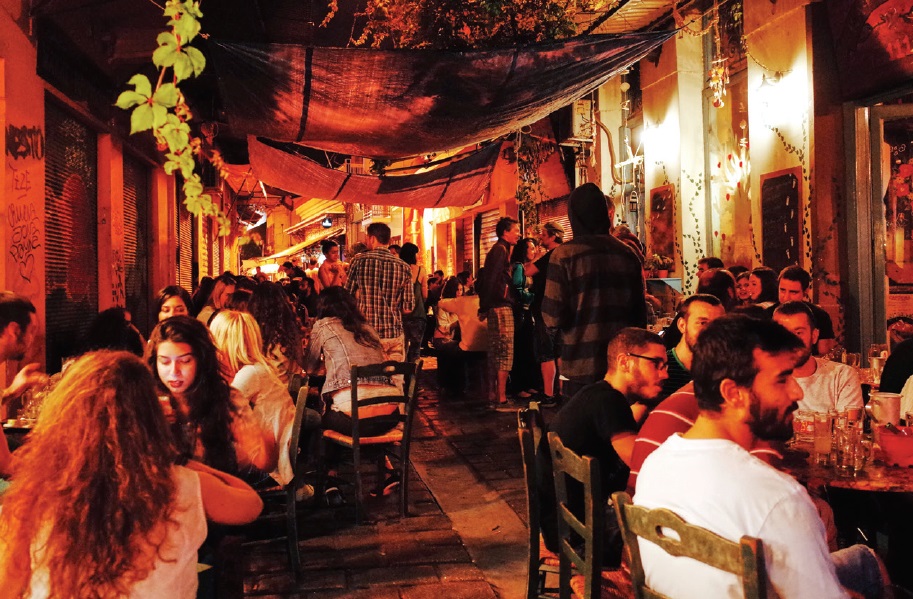
For many, Monastiraki is Athens at its most charming. Just steps from the metro station is a handsome square fringed with the world’s best souvlaki restaurants, a bustling flea market (daily, but at its best on a Sunday morning) and yet more outstanding millennia-old highlights to discover. In particular, be sure to explore the Agora, the centre of civic and social life in ancient Athens.
Here you can walk in the footsteps of Socrates and Pericles as you explore this huge site of shops and streets, administrative buildings and places of worship, including the beautifully preserved Temple of Hephaestus.
The splendid two-storey Stoa of Attalos – a covered walkway of Doric columns and storefronts that may well have been the first ever shopping arcade – has been skilfully reconstructed upon ancient foundations to provide a glimpse of the Agora’s former glory. Further insights may be gleaned at the Stoa’s exemplary little museum.
Plaka
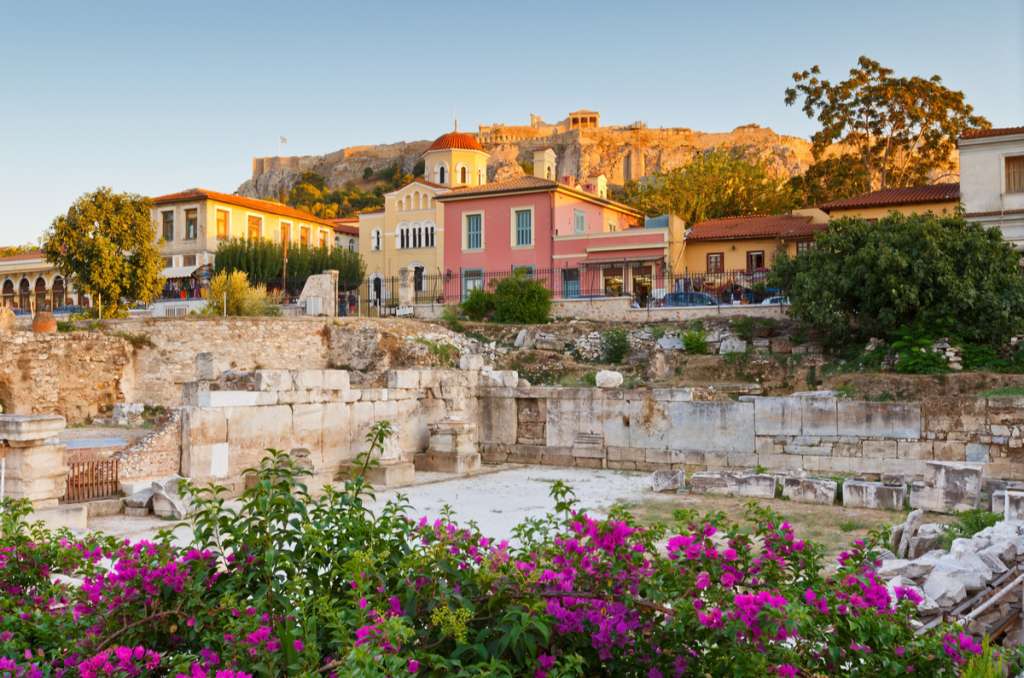
The old town of Athens is undeniably appealing, packed with attractively dilapidated neoclassical mansions, friendly tavernas, fine shops and fascinating little museums. Spend a couple of hours happily wandering, then recharge your batteries with a bite to eat and an electric shot of Greek coffee on Plaka’s most famous street – the picturesque “Restaurant Steps” of Mnisikleous.
The Basics
- Benaki Museum, 1 Koumbari Street, benaki.gr
- Aristotle’s Lyceum, Rigilis Street, visitgreece.gr
- Byzantine and Christian Museum, byzantine museum.gr
3. Athens for Foodies
It may not feature on too many lists of great gastronomic cities, but this is the capital of a country boasting some of the finest fresh ingredients in the world, with flavours that sing in every dish, from the simplest to the most sophisticated.
Street eats
Athens’ street food is delicious and sensational value for money. Sample gyros (long slices of pork or chicken from a rotating spit in a soft pitta wrap with yoghurt and salad) from any number of hole-in-the-wall takeaways, or head to Thanasis in Monastiraki (Mitropoleos 69) for the best souvlaki (tender, juicy minced lamb grilled on a skewer and served with tomatoes and onions on a pillow of bread). The city is also blessed with a cornucopia of bakeries dishing up savoury pies and tarts, cream-filled indulgences and glistening slabs of cake drenched in sticky syrup.

Lucky seven
The seven-course sharing menu at Tzitzikas kai Mermigas surely represents the best dining value in the city. Get there around 6pm to avoid the queues, order a very drinkable bottle of house red and marvel at the quality of dish after delicious dish. A perfectly dressed spinach salad with pine nuts, pomegranate and parmesan is followed by herby feta cheese balls and a wedge of Naxos gruyère, fried in sesame seeds and served over bacon dripping in honey. Then its kitharoto (Greek risotto), rich with mushrooms and truffle oil, a meaty plate of pork chop and tender, rosemary-scented baby goat, and a note-perfect crème brulée to finish.
School dinner
For an engaging primer in Greek cuisine, consider a visit to the Athens School of Gastronomy, a new museum with edible exhibits. Traditional Greek ingredients, particularly the honey and jam, wine and olive oil produced in the country’s monasteries and nunneries, are celebrated here, and in the courtyard restaurant you can enjoy a series of light bites or even a full meal inspired by the exhibition.
Posh nosh
If you’re in the mood for a blowout, enjoy cocktails and spectacular views of the illuminated Acropolis at the rooftop bar of the Grand Bretagne Hotel. Then head on to the best restaurant in town, Michelin-starred Funky Gourmet. You’ll wonder at a menu of imaginative dishes combining traditional flavours and cutting-edge techniques, including chocolate orange spheres, flash-frozen in liquid nitrogen. But you might need a stiff digestif to take the edge off the bill starting at 150 per person, or 250 with wine.

Getting there and around
Cruise ships dock in Piraeus, southwest of the Greek capital. Transfer time to central Athens is around 30 minutes by road, but independent-minded travellers should consider the city’s excellent metro, which also serves Piraeus. A day pass is good for travel to and from the port and unlimited travel on the three-line network. In the heart of city, taxis are also plentiful and cheap.
Athens Travel Facts
- British citizens do not require a visa to visit Greece. However, your passport will need to be valid for at least six months after your return.
- The currency in Athens is the Euro.
- Speaking of currency, cash is more common in Greece than credit or debit cards.
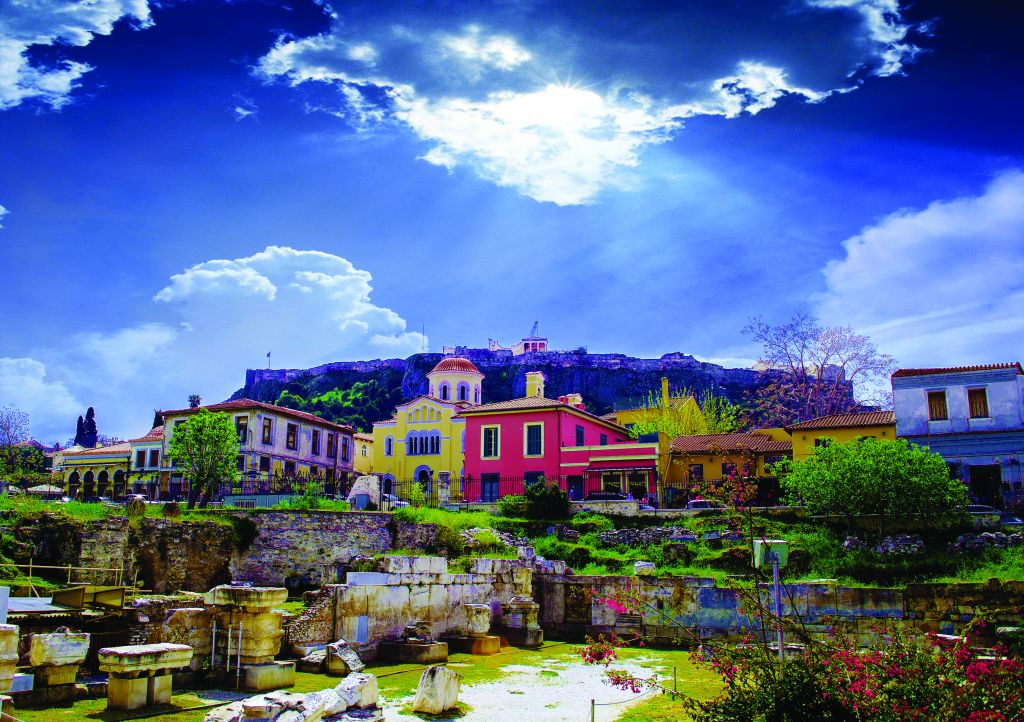
Top 15 Athens facts you might not know
- Athens is Europe’s oldest capital.
- Athens is home to around three million people.
- Athens is home to a millennia of architectural styles. From Neoclassical to Greco-Roman were founded here.
- Athens welcomes just over five million visitors each year.
- In 2017, a oil-tanker sank off the West Athens island of Salamina, spilling 25,000 tons of oil and marine gas into the Saronic Gulf.
- The Greeks have been producing wine for 6,500 years.
- The preferred mode of transportation is walking. So pack comfortable shoes.
- Philomousou Etairias Square was the first outdoor cinema built in Athens in the 1920s. This cinema still remains a popular attraction for locals and tourists.
- UNESCO declared Athens the World Book Capital in 2018.
- Greece is currently home to over 50,000 refugees.
- Athens weather is ideal year-round. You can expect temperatures in the upper 20s to mid-30s.
- The best known Greek food are gyros. Your choice of pork or chicken mixed with, potatoes, onions, and tomatoes folded into a wrap.
- The first Olympic games were held in Athens in 776 BC.
- The parthenon has been a temple, church and a Mosque throughout its lifetime.
- The evil eye is a common superstition.
Editor’s Note: This post was originally published in September 2017. It has been updated for accuracy and comprehensiveness.
